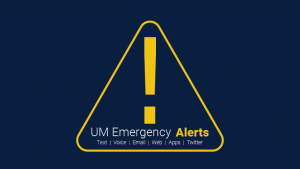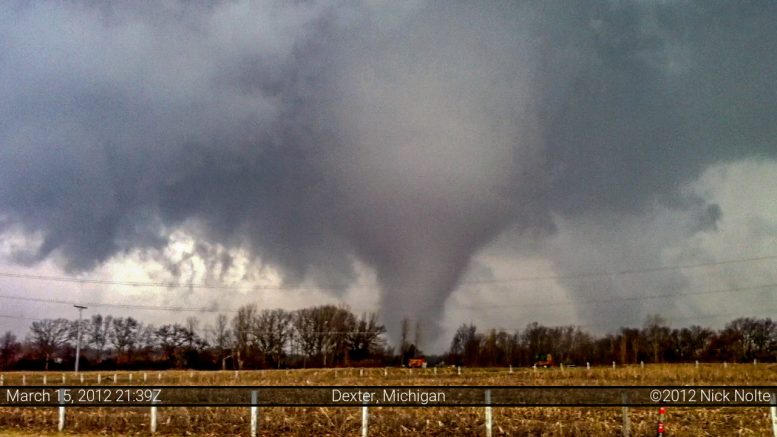In 2017, the number of severe weather events in the state of Michigan was well below the yearly average, according to the National Weather Service (NWS). Despite this, it was still a deadly and expensive year in the state with five weather-related fatalities and more than $220 million in damages.
As part of Michigan Severe Weather Awareness week, April 8 – 14, university officials would like to remind members of the campus community about important information to help plan for and respond to various weather situations.

Graphic from Michigan State Police
Local and state emergency management officials are asking Michiganders to take action to prepare by participating in a statewide tornado drill at 1 p.m. on Wednesday, April 11. While the Ann Arbor campus is not conducting drill activities that day, we ask all members of our community to take time to identify the lowest interior space to take cover during a tornado. If a basement does not exist, find an interior hallway away from windows, doors and outside walls.
In Michigan, tornadoes occur most frequently between April and July. However, tornadoes can happen at any time of the year, as was shown in 2015 when Michigan experienced its first-ever December tornado in Wayne County. As one of nature’s most violent storms, tornadoes can devastate homes and property in just seconds. The average lead time for tornadoes to develop is 10 to 15 minutes, which means citizens need to be ready to react quickly when a warning is issued.
Community members are encouraged to follow these additional safety tips:
 Sign up for UM Emergency Alerts
Sign up for UM Emergency Alerts
Messages are delivered when warnings for a tornado or winds of 75 mph or greater have been issued for Washtenaw County. The UM Emergency Alert system delivers urgent messages via text, phone calls, email, U-M Gateway, DPSS website, Twitter, the Michigan App, DPSS App and digital signage. In the event of short-term emergency conditions (lasting no longer than two calendar days) due to severe weather, natural disaster, major utility failures or other unforeseen circumstances, the University may declare an Emergency Reduction in Operations. Faculty and staff should familiarize themselves with this policy, which reflects the high value the university places on its faculty, staff and students.

Graphic from the National Weather Service
Storm Watch versus Storm Warning
A storm “watch” means that conditions are favorable to produce severe weather. A storm “warning” means that severe weather, such as a severe thunderstorm or tornado, has been detected in the area and people should seek immediate shelter to protect themselves.

Lightning strikes over Michigan Stadium. Photo from Mark Bialek, AnnArbor.com
Seek shelter
If you are outdoors and see lightning, or hear thunder or outdoor warning sirens, then you are likely within striking distance of a storm. It’s important to seek shelter indoors within a sturdy building or vehicle until 30 minutes following the last lightning flash and monitor local media outlets for official information.
When warnings are issued for tornadoes or wind speeds of 75 mph or greater, the city of Ann Arbor and Washtenaw County will activate the outdoor warning sirens. Additionally, the city tests the sirens the second Tuesday of each month at 1 p.m, while the county tests at noon the first Saturday of each month, March through October.
The city of Ann Arbor sirens are intended to be heard by those outdoors throughout the city, including the U-M campus, to warn people to take indoor shelter. Typically, the county sirens are not audible in most on-campus locations.
When severe weather strikes, strike back by moving your activities to a safe, indoor location.
Please visit the DPSS website for more severe weather safety tips.
[embedyt] https://www.youtube.com/watch?v=2i__7eSao34[/embedyt]
